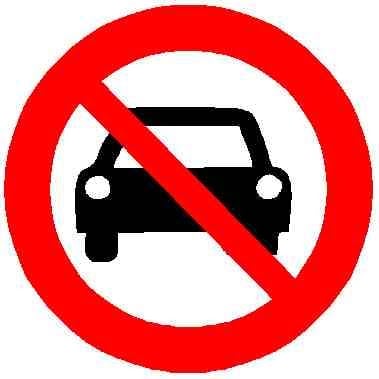

This graph is normalized per kg. Graphs look similarly per kcal as well


This graph is normalized per kg. Graphs look similarly per kcal as well


It’s enough to make it difficult to keep to 2C climate targets on its own. Its not something we should ignore - especially since much of it comes in methane emissions which means reduction in it can be felt quicker and reduce chance of hitting feedback loops. We must tackle all sources
To have any hope of meeting the central goal of the Paris Agreement, which is to limit global warming to 2°C or less, our carbon emissions must be reduced considerably, including those coming from agriculture. Clark et al. show that even if fossil fuel emissions were eliminated immediately, emissions from the global food system alone would make it impossible to limit warming to 1.5°C and difficult even to realize the 2°C target. Thus, major changes in how food is produced are needed if we want to meet the goals of the Paris Agreement.
https://www.science.org/doi/10.1126/science.aba7357
That’s also on top of other environmental issues that it contributes to besides just climate change. Land usage, water usage, waste runoff
Transitioning to plant-based diets (PBDs) has the potential to reduce diet-related land use by 76%, diet-related greenhouse gas emissions by 49%, eutrophication by 49%, and green and blue water use by 21% and 14%, respectively, whilst garnering substantial health co-benefits
https://www.mdpi.com/2072-6643/14/8/1614/html
And pesticide and fertilizer usage is lower
Thus, shifting from animal to plant sources of protein can substantially reduce fertilizer requirements, even with maximal use of animal manure
https://www.sciencedirect.com/science/article/abs/pii/S0921344922006528
The diet containing more animal products required an additional 10 252 litres of water, 9910 kJ of energy, 186 g of fertilizer and 6 g of pesticides per week in comparison to the diet containing less animal products


For agriculture at least, the differences are often quite categorical. The best cast production will not get you the same differences as reducing meat consumption
Plant-based foods have a significantly smaller footprint on the environment than animal-based foods. Even the least sustainable vegetables and cereals cause less environmental harm than the lowest impact meat and dairy products [9].
https://www.mdpi.com/2072-6643/14/8/1614/html
It’s an even larger difference than eliminating all food waste (which we should also work to reduce)
we show that plant-based replacements for each of the major animal categories in the United States (beef, pork, dairy, poultry, and eggs) can produce twofold to 20-fold more nutritionally similar food per unit cropland. Replacing all animal-based items with plant-based replacement diets can add enough food to feed 350 million additional people, more than the expected benefits of eliminating all supply chain food loss.


If we assume that’s the case, half of revenue is still not a byproduct, it’s a coproduct. The other half is still pretty relevant to its value and usage. If 50% of your revenue disappears from something, you’re going to be making a lot less of it


It’s worth noting that soybean meal is not a byproduct. When we look at the most common extraction method for soybean oil (using hexane solvents), soybean meal is still the driver of demand
However, soybean meal is the main driving force for soybean oil production due to its significant amount of productivity and revenues
[…]
soybean meal and hulls contribute to over 60% of total revenues, with meal taking the largest portion of over 59% of total revenue
https://www.sciencedirect.com/science/article/abs/pii/S0926669017305010
This is even more true of other methods like expelling which is still somewhat commonly used
Moreover, soybean meal is the driving force for the whole process [expelling oil from soy] because it provides over 70% of the total revenue for soy processing by expelling


Good news is that overall arable farmland usage goes down the less meat you eat. Don’t need to use all the same land, you have flexibility to move around production
we show that plant-based replacements for each of the major animal categories in the United States (beef, pork, dairy, poultry, and eggs) can produce twofold to 20-fold more nutritionally similar food per unit cropland. Replacing all animal-based items with plant-based replacement diets can add enough food to feed 350 million additional people, more than the expected benefits of eliminating all supply chain food loss.


Yes, though that doesn’t mean it can’t be stopped. That it can be reduced in some countries is a sign we can make progress on it
Much of the global growth is occurring in developing countries right now who often view increased meat consumption as a symbol of wealth and status (in part due to seeing it highly consumed in the west). Changing expectations and consumption in the west can have a ripple effect outward


To an extent, yes it would likely do that. Though on the other hand running into the maximum capacity limitations would not look pretty. Even countries that have a just bit higher grass-fed production than others have a fair number of issues (and still use plenty of supplemental grain)
For instance, in New Zealand, they use a massive amount of synthetic fertilizer on grasslands to try to make it keep up for dairy production
The large footprint for milk in Canterbury indicates just how far the capacity of the environment has been overshot. To maintain that level of production and have healthy water would require either 12 times more rainfall in the region or a 12-fold reduction in cows.
[…]
The “grass-fed” marketing line overlooks the huge amounts of fossil-fuel-derived fertiliser used to make the extra grass that supports New Zealand’s very high animal stock rates.
Or in the UK and Ireland where grass-fed production leads to deforestation and they still need additional grain on top of it
Most of the UK and Ireland’s grass-fed cows and sheep are on land that might otherwise be temperate rainforest – arable crops tend to prefer drier conditions. However, even if there were no livestock grazing in the rainforest zone – and these areas were threatened by other crops instead – livestock would still pose an indirect threat due to their huge land footprint
[…]
Furthermore, most British grass-fed cows are still fed crops on top of their staple grass


We should push for large institutional change, but don’t ignore individual change either. Problem is how will you get said governments to act if people aren’t also stepping up and they expect backlash to acting? The more people expect it to be cheap and highly consumed, the harder it will be for them to act. Moving people away from meat individually makes it easier. Movements that succeed usually have both individual and institutional change
Institutional change that is achievable at the current moment is smaller. There’s been some success with things like changing the defaults to be plant-based (which is good and we should continuing to push for that), but cutting subsides is going to be an uphill battle until a larger number of people change their consumption patterns


Beef production is falling in some countries. For instance in Germany
In 2011, Germans ate 138 pounds of meat each year. Today, it’s 121 pounds — a 12.3 percent decline. And much of that decline took place in the last few years, a time period when grocery sales of plant-based food nearly doubled.


Unfortunately grass-fed production is no solution. It both does not scale or help reduce emissions
We model a nationwide transition [in the US] from grain- to grass-finishing systems using demographics of present-day beef cattle. In order to produce the same quantity of beef as the present-day system, we find that a nationwide shift to exclusively grass-fed beef would require increasing the national cattle herd from 77 to 100 million cattle, an increase of 30%. We also find that the current pastureland grass resource can support only 27% of the current beef supply (27 million cattle), an amount 30% smaller than prior estimates
[…]
If beef consumption is not reduced and is instead satisfied by greater imports of grass-fed beef, a switch to purely grass-fed systems would likely result in higher environmental costs, including higher overall methane emissions. Thus, only reductions in beef consumption can guarantee reductions in the environmental impact of US food systems.


It’s fundamentally inefficient. The claims of “green” meat production are greenwashing from the industry. The industry would love for you to believe there is a way that they could clean it up. It takes growing tons of crops just for most of that energy to be lost by the creatures moving around, digesting, etc.
Plant-based foods have a significantly smaller footprint on the environment than animal-based foods. Even the least sustainable vegetables and cereals cause less environmental harm than the lowest impact meat and dairy products [9].
https://www.mdpi.com/2072-6643/14/8/1614/html
Nor is something like grass-fed production a solution when that has even higher emissions due to higher rates of methane production from cows. It also is even higher land demand
We model a nationwide transition [in the US] from grain- to grass-finishing systems using demographics of present-day beef cattle. In order to produce the same quantity of beef as the present-day system, we find that a nationwide shift to exclusively grass-fed beef would require increasing the national cattle herd from 77 to 100 million cattle, an increase of 30%. We also find that the current pastureland grass resource can support only 27% of the current beef supply (27 million cattle), an amount 30% smaller than prior estimates
[…]
If beef consumption is not reduced and is instead satisfied by greater imports of grass-fed beef, a switch to purely grass-fed systems would likely result in higher environmental costs, including higher overall methane emissions. Thus, only reductions in beef consumption can guarantee reductions in the environmental impact of US food systems.

They didn’t have the votes to kill it in the house - the best they can do procedurally is delay it
What specific action would you have preferred them to take that wouldn’t have required 4 house republicans breaking rank or 4 republican senators breaking rank?
EDIT: and to clarify this is not a defense of Schumer and Jeffries in general, just that here in this specific case they actually did much of what people were asking them to do - use their procedural powers to delay things more. They don’t have magic wands to stop things without a majority of either chamber

Confused as to how this is reported well after the fact and has the time of the speech rather incorrect. Jeffries went for >8 Hours
WASHINGTON — House Minority Leader Hakeem Jeffries, D-N.Y., broke the record for the longest House floor speech ever Thursday, blasting Republicans and delaying passage of their sweeping tax and spending bill for over eight hours
[…]
He ended his 8-hour, 44-minute speech shortly after 1:30 p.m., yielding back with rapturous applause from Democrats who chanted his name and embraced him.
Note that this normally can’t be done in the house by most members. Only the party leaders can do this through the the so called magic minute where the speech time isn’t counted against the debate time by convention


They really don’t understand the structure of the poultry industry. The genetics are controlled by Tysons and Aviagen who breed around 90 to 99% of all chickens in the industry in the US (similarly high globally). Primarily the Cobb 500 and Ross 308 which are both fast growing. They do it this way because the industry wants their super fast growth at the expense of their health
Fast-growing chickens that make up almost all the industry are already known to be at a higher risk of illness and have a worse immune system. They have all kinds of other health issues from difficulty walking to hock burns
The methods of mass killing on disease detection are also quite cruel too I should add, but this administration don’t seem to be too concerned about that. Look up ventilation shutdown and foam depopulation if you want more info on that


Note that this article is not about the US
Decades ago, a generation of UK schoolchildren unwittingly took part in an initiative aimed at boosting reading skills – with lasting consequences


The damage can still be reduced. It’s not binary even if we’re not in great shape. Every 0.1C matters. Our policy decisions still matter. Just because we’re likely to miss earlier targets doesn’t mean there isn’t a difference between something like 2.2C and 3C
This whole sentiment that “it’s over” is one large emitters actively promote to try to stop people from acting. Don’t play into their hands. Doomerism is wielded as a tool to demobilize people. Powerful people want you not to act for a reason - because they fear we can still make progress

If there were no ranked choice, he still would have won in this case. He won the plurality of the votes on the first round (unexpectedly and a massive over performance of the polls)
Granted ranked choice may have made more people feel safer to consider him in the first place, but still worth noting here

Current trajectory estimates are more like +2.5C to +3C by 2100 based on existing policy. We’ve actually managed to move the trajectory downward even though we obviously have a lot to go. Every little bit counts. It is far less binary than this overly simplistic tweet is suggesting
Excessive claims like this end up demotivating people and make them want to give up when we can reduce the damage each time we move our trajectory down by 0.1C
Cheesemaking uses even more dairy than it being in liquid form. Varies depending on what you’re looking at but it can be around a 10:1 ratio. Butter from dairy milk has an even worse conversion
Have to make up for the lost water when turning it into a solid and other stuff you strip from the milk and that’s going to be from even more dairy going into it